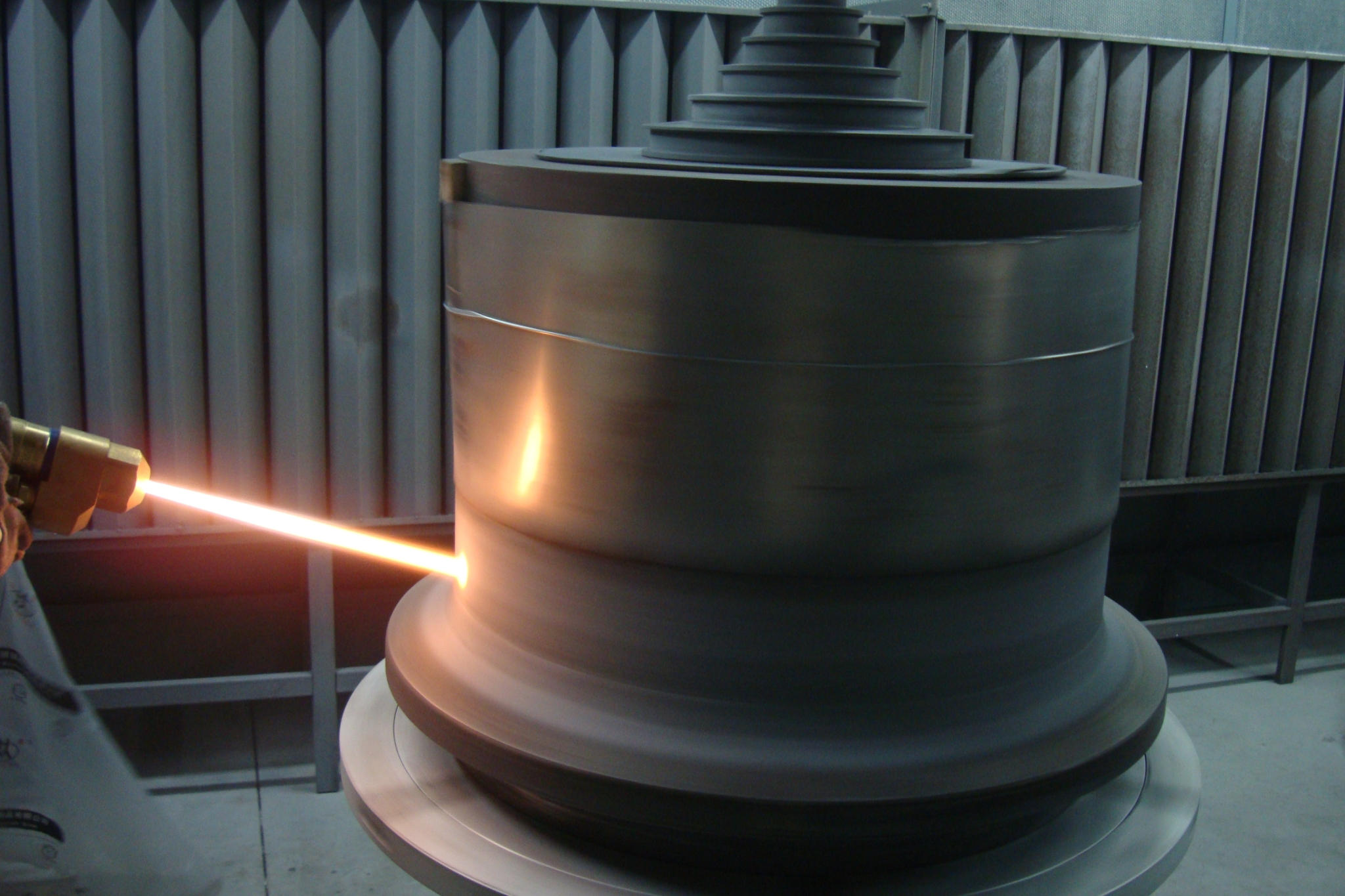

Thermal spraying technology is an important part of surface engineering in the field of materials science. It is a surface strengthening and surface modification technology. By spraying a layer of coating on the surface of the metal substrate, the metal has wear resistance, corrosion resistance and high temperature resistance. Oxidation, electrical insulation, heat insulation, radiation protection, anti-wear and sealing properties. Thermal spraying technology is mainly used for the pre-protection of high-temperature, wear-resistant, and corrosion-resistant components, the preparation of functional coatings, and the repair of failed components. In the thermal spraying process, flame spraying, arc spraying, plasma spraying, explosive spraying and supersonic spraying technology are widely used. Flame spraying is realized by a flame spray gun. The spray gun introduces acetylene, oxygen or compressed air through a gas valve. After acetylene and oxygen are mixed, a combustion flame is generated at the nozzle outlet, and the introduced powder or rod coating material is heated and melted in the flame. Then, under the action of the flame, the mist-like droplets are sprayed onto the surface of the substrate to form a coating. The two linear material coating materials used in arc spraying are automatically introduced by the wire feed wheel. When a large current passes between the two linear materials, an arc will be generated. The linear material will melt rapidly under the high temperature of the arc and will be compressed The air acts as small droplets and is sprayed onto the surface of the substrate to form a coating. Plasma spraying is suitable for powder coating materials. The plasma spray gun converts electrical energy into heat energy to produce a high-temperature and high-speed plasma flame. The plasma flame temperature can be as high as 50000 ℃, which can melt all spray materials. Explosive spraying uses the energy provided by the ignition and explosion of a mixture of combustible gas and oxygen to spray powder onto the surface of the substrate to form a coating. The supersonic flame spraying method has a high particle impact speed, which improves the bonding strength, hardness, compactness, and wear resistance of the coating. Most ceramic materials have an ionic bond or covalent bond structure, high bond energy, and atomic The bonding force is strong and the surface free energy is low, which gives the ceramic material the characteristics of high melting point, high stiffness, high chemical stability, high insulation and heat insulation capacity, small thermal expansion coefficient, and small friction coefficient; but compared with metal materials, its plasticity Poor deformability, sensitive to stress concentration and cracks. Obviously, using ceramics as mechanical structural materials has worse reliability than metal materials, difficult machining, and high cost. However, the use of thermal spray technology to prepare ceramic coating booths on metal substrates can organically combine the characteristics of metal materials with those of ceramic materials to obtain a composite structure. Due to the exceptionally superior comprehensive performance of this composite material structure, thermal spraying technology has rapidly expanded from high-end fields to the characteristics and overall structure of ceramic coating technology in civil industries such as energy, transportation, metallurgy, textile, petrochemical, and machinery. Compared with ceramic materials, ceramic coating technology has the following characteristics:
1. It can organically combine the strength and toughness and easy processing of metal materials with the high temperature resistance, wear resistance and corrosion resistance of ceramic materials.
2. Taiwan management chooses coating materials and suitable spraying process to obtain various functional surface strengthening coatings.
3. Not restricted by the substrate: the substrate material used for thermal spraying can be inorganic materials such as metal, ceramics, cement, refractory materials, stone, gypsum, etc., or organic materials such as plastic, rubber, wood, and paper.
4. Not limited by the size of the workpiece and the construction site.
5. The coating deposition rate is fast, the thickness is controllable, and the process is simple.
6. The ceramic coating has good machinability, and spraying can be carried out after the coating is damaged.

Hot information

